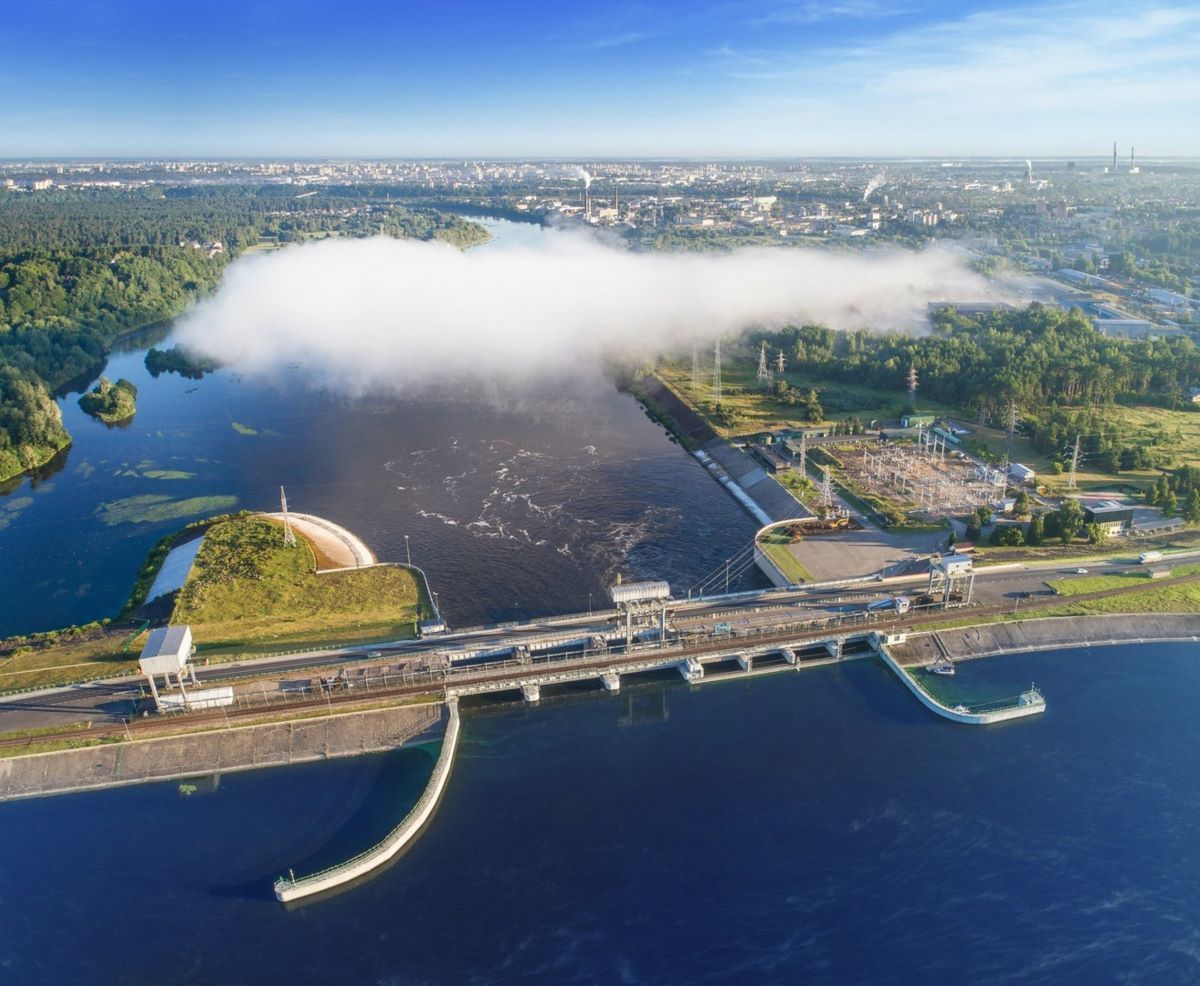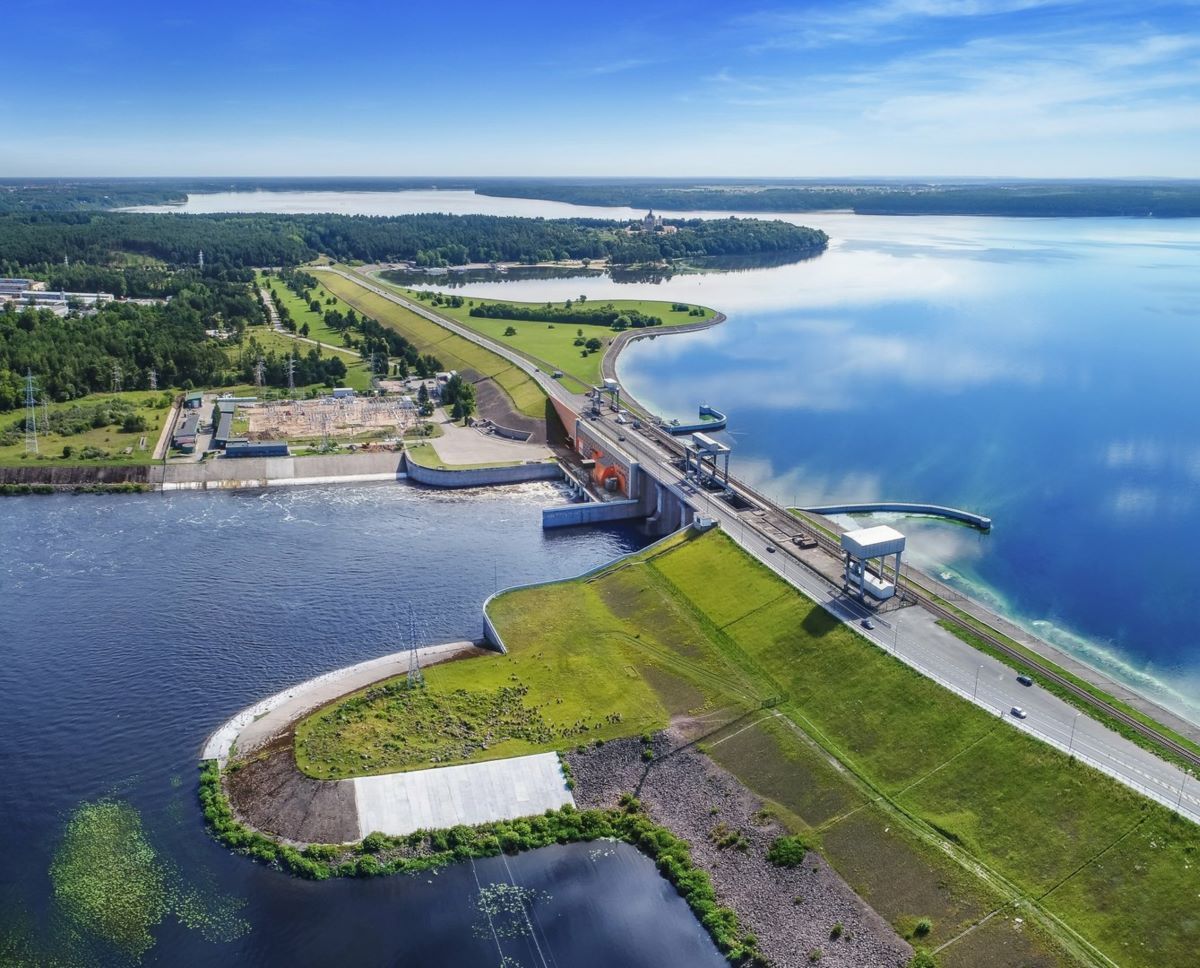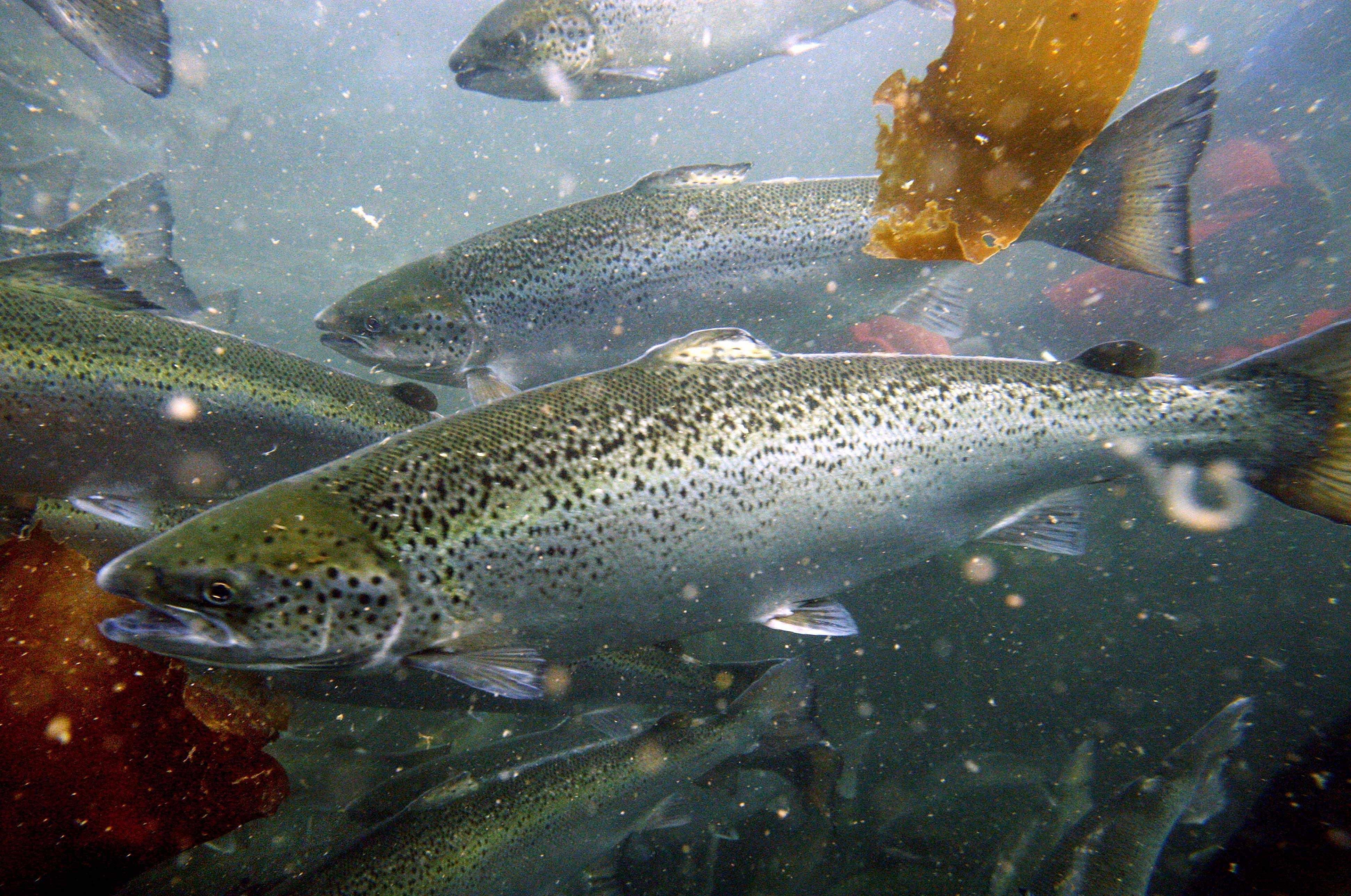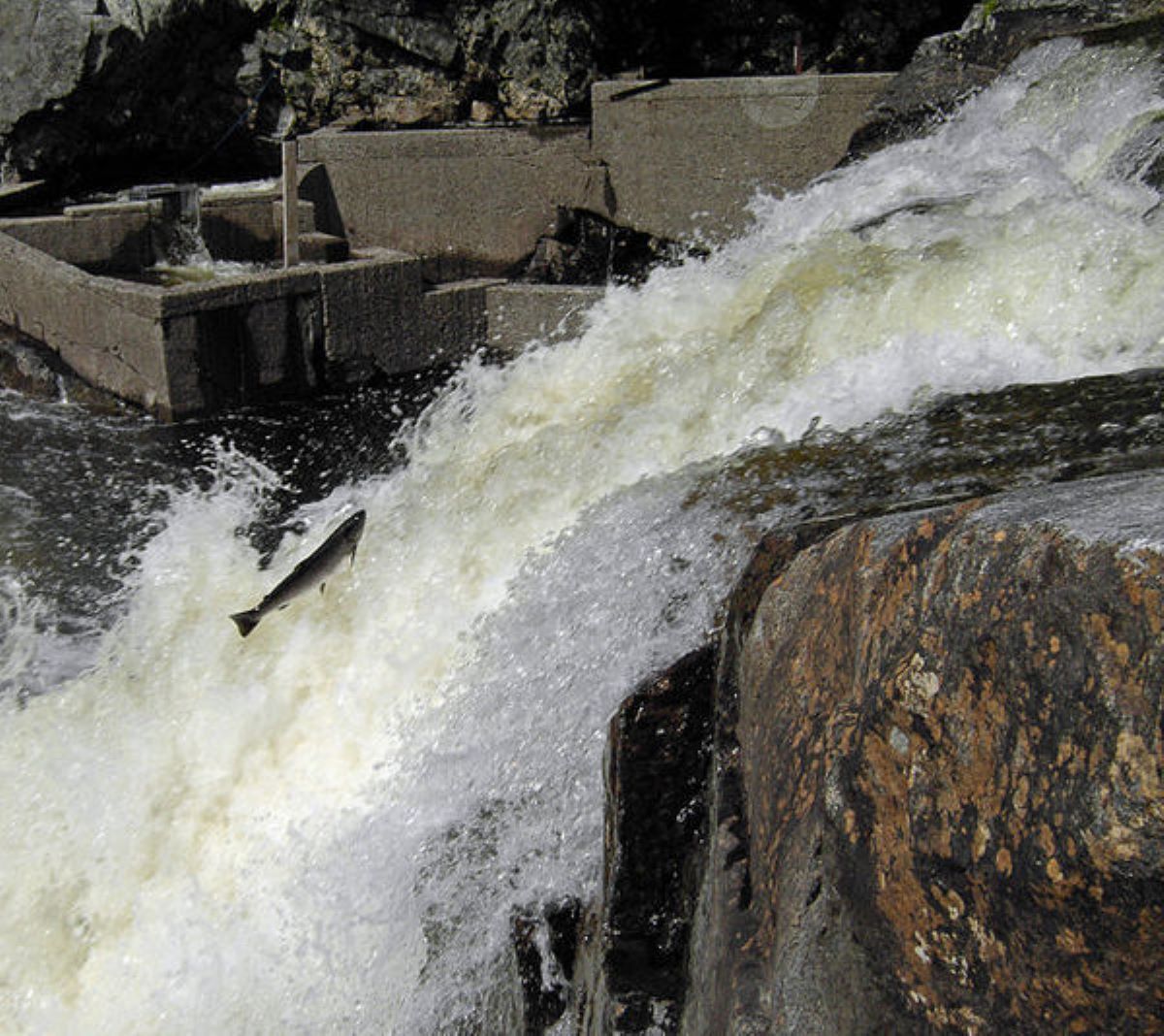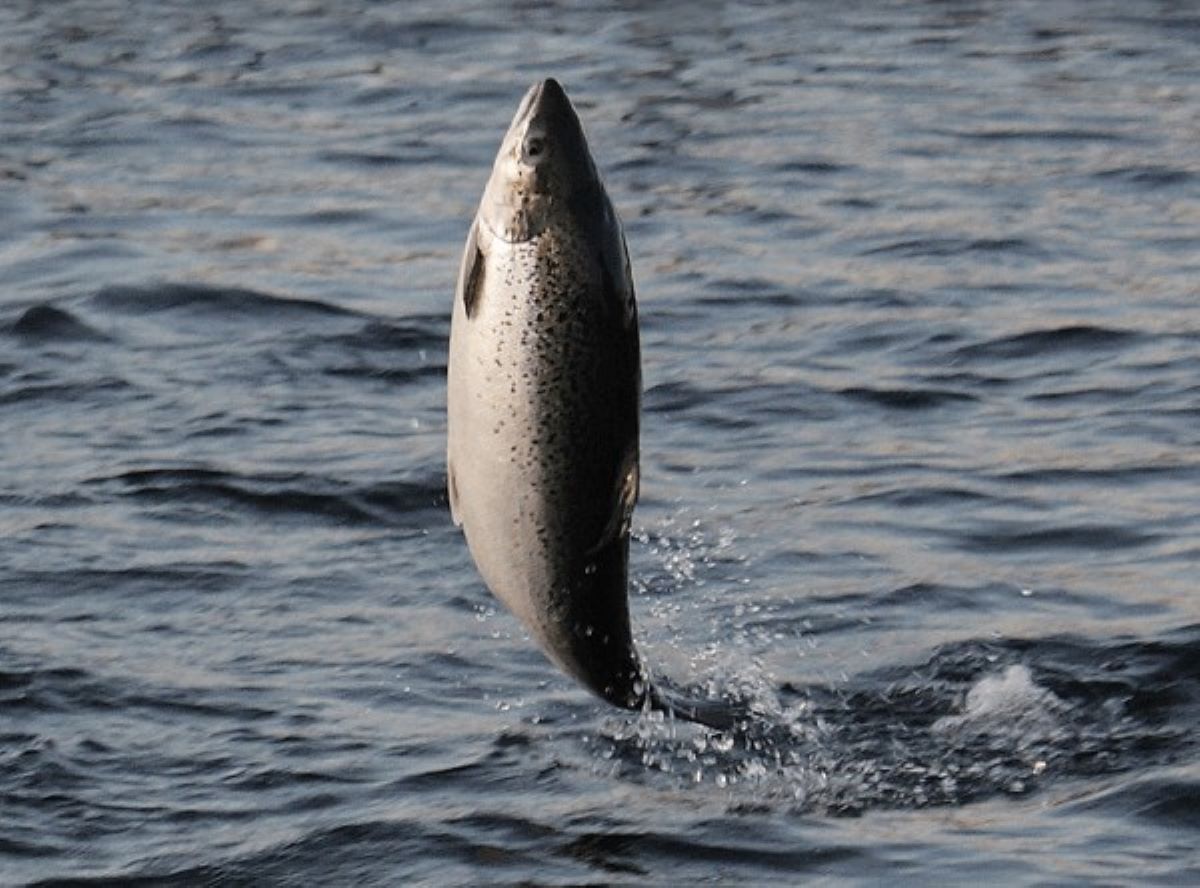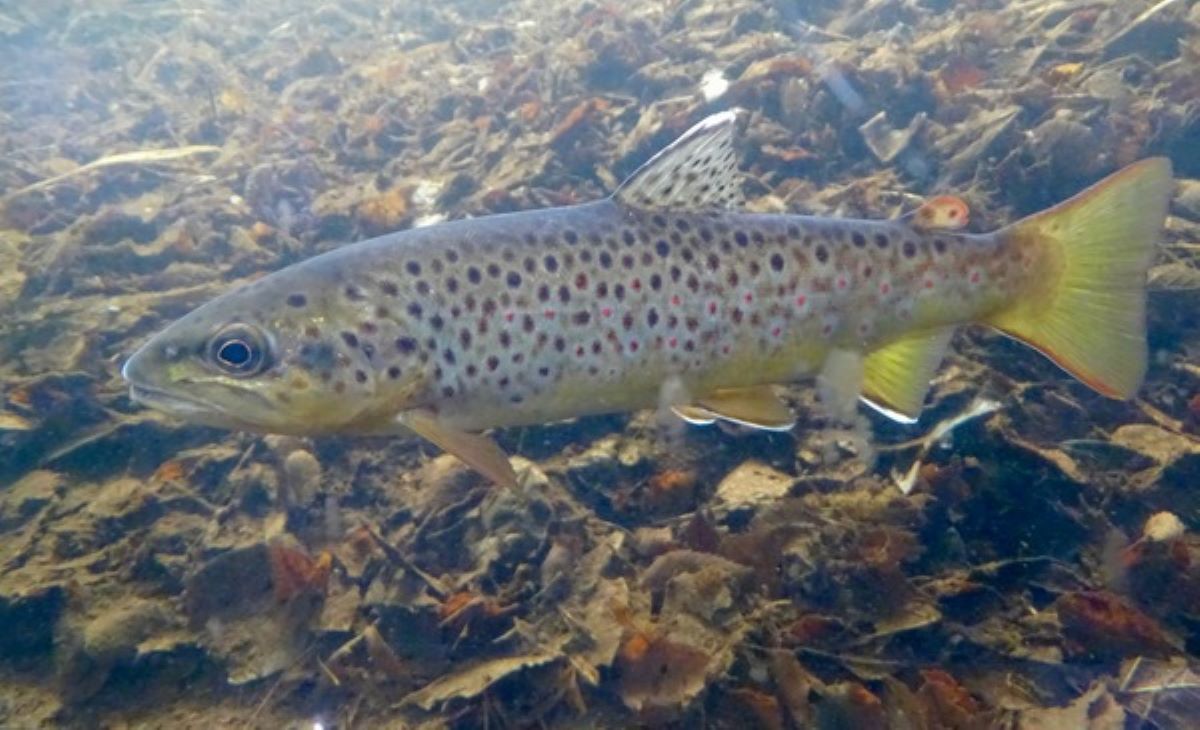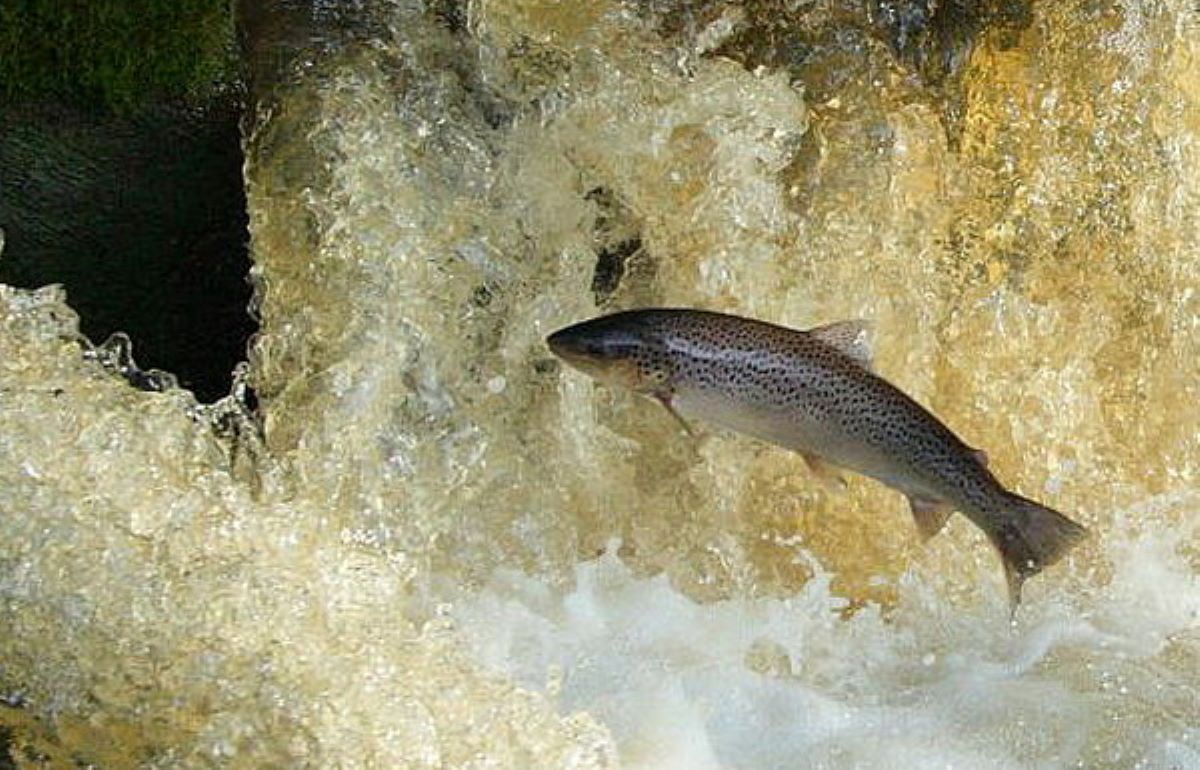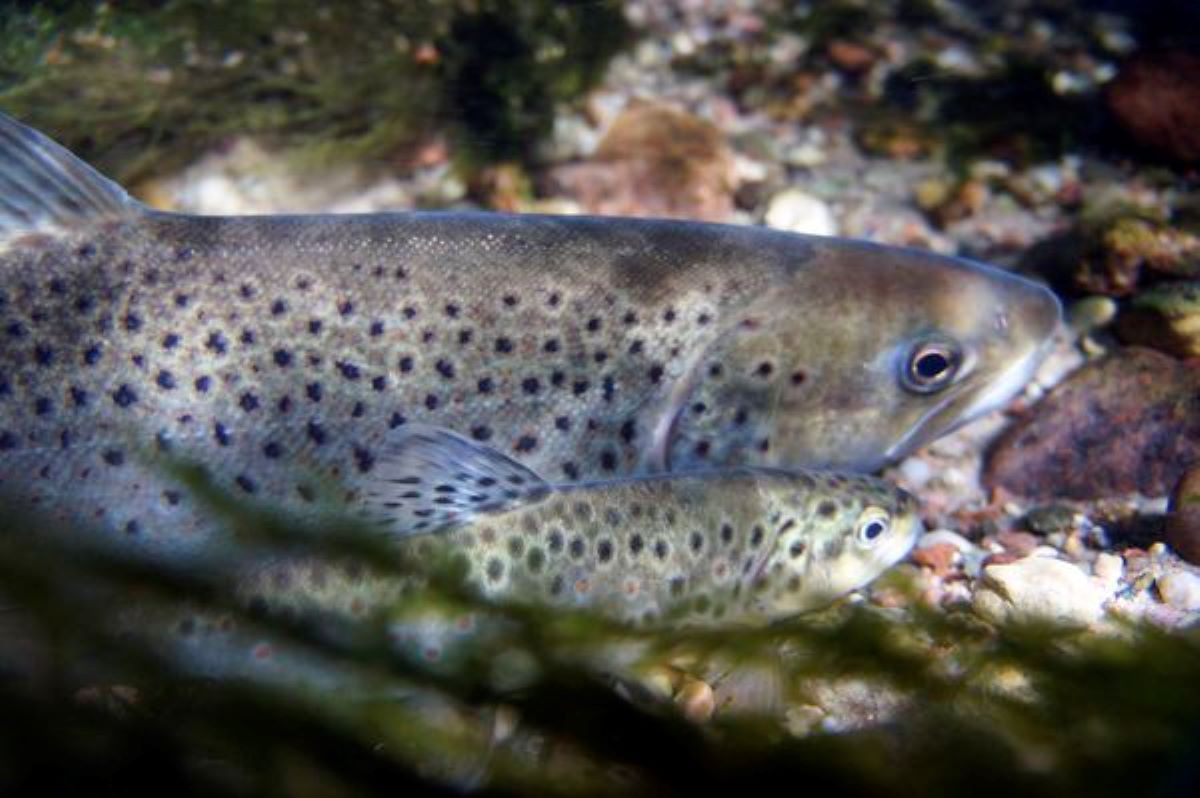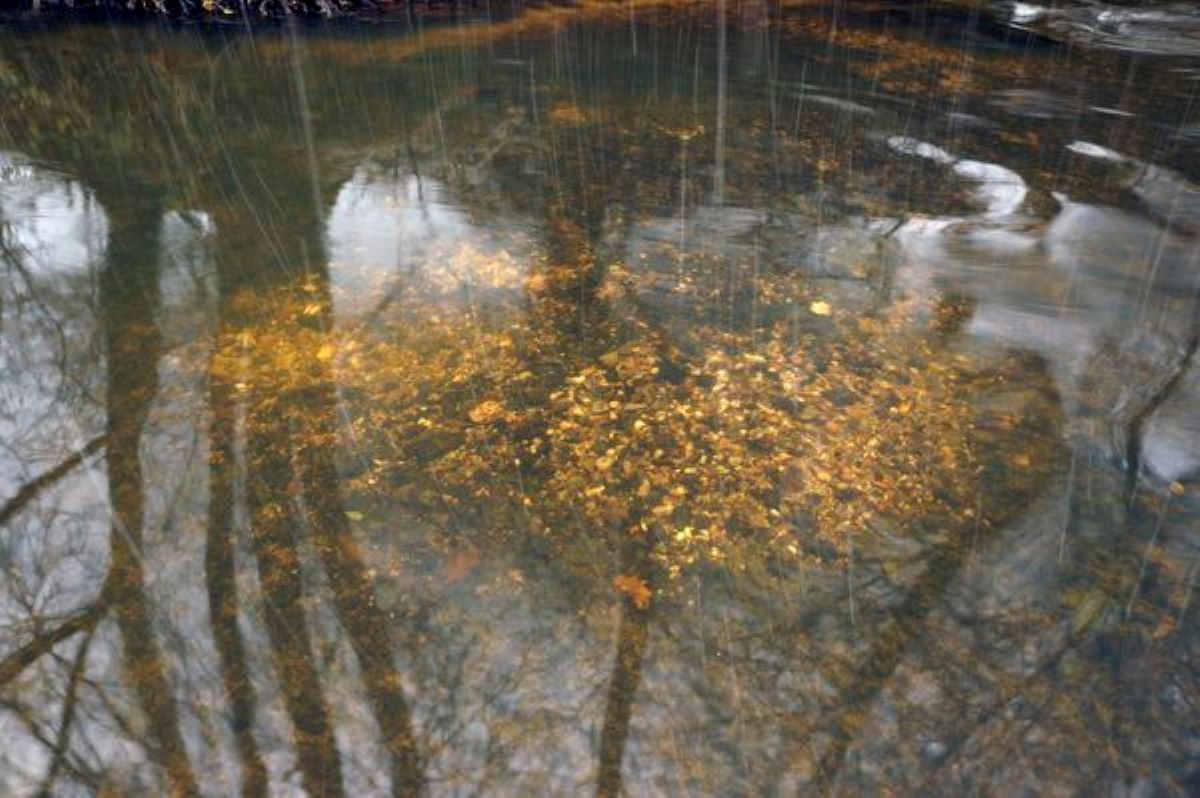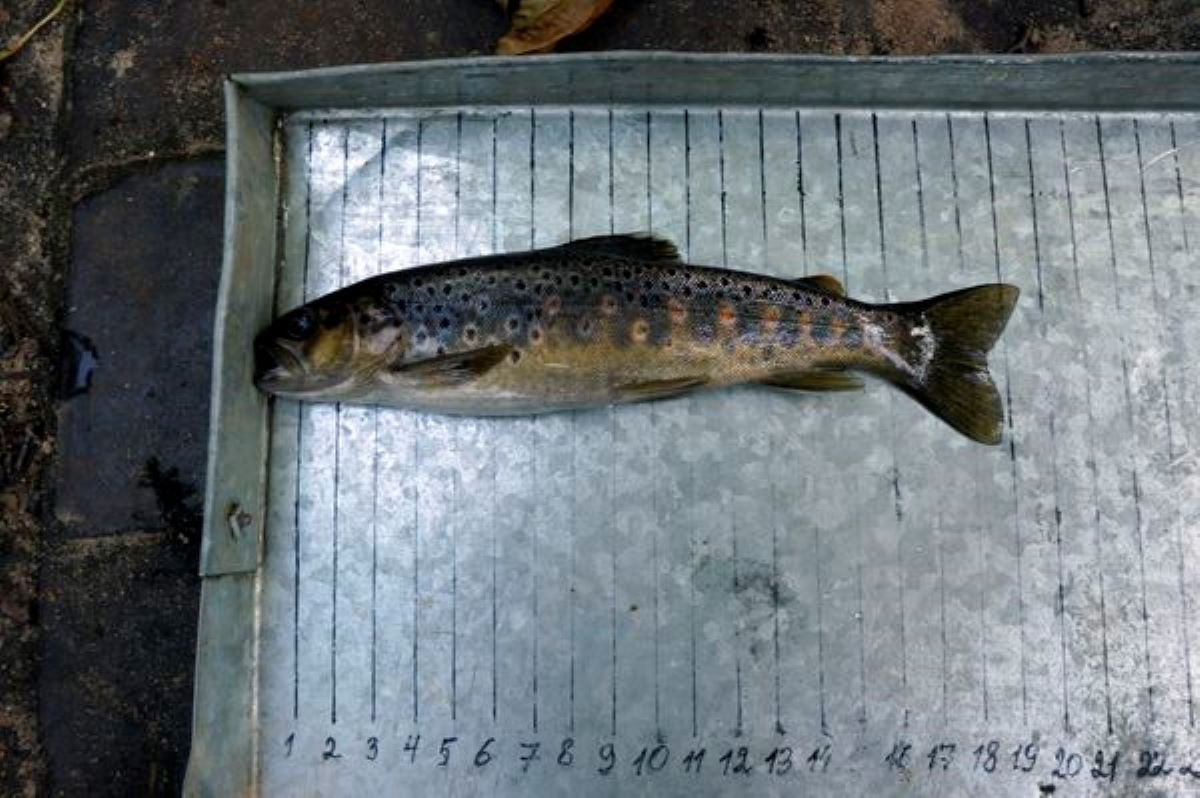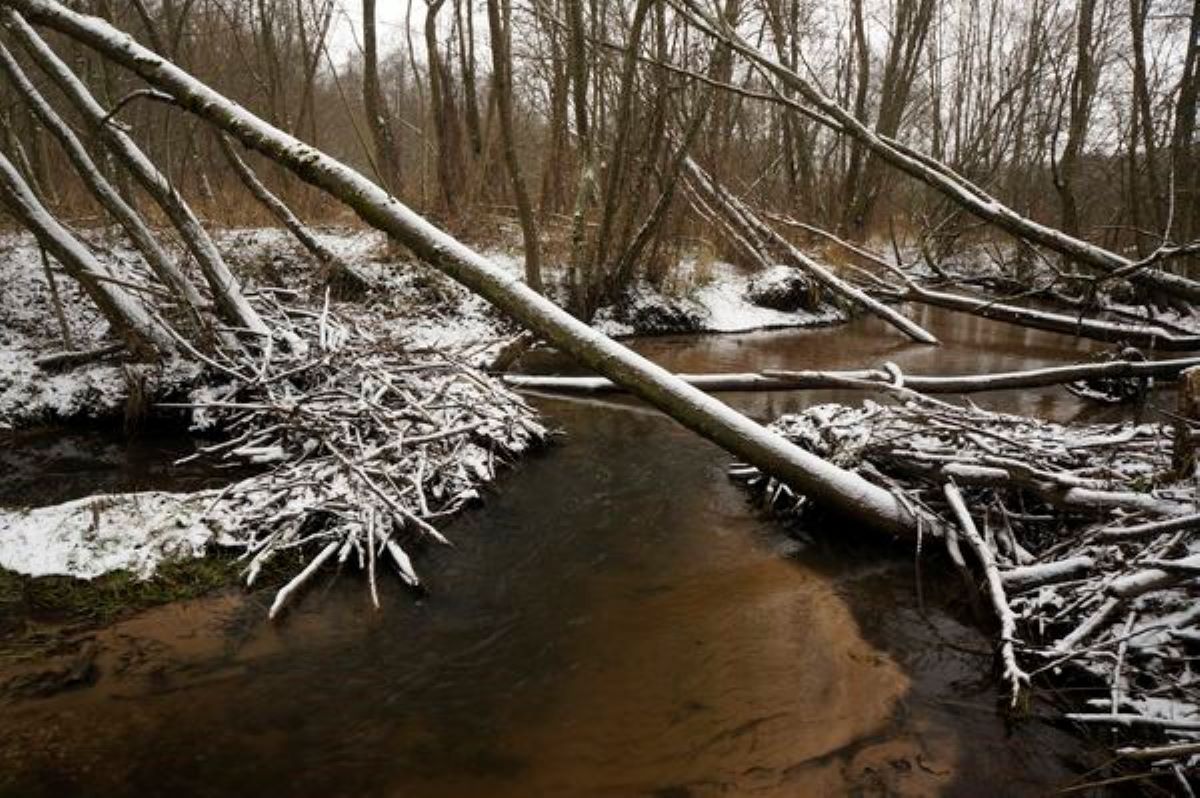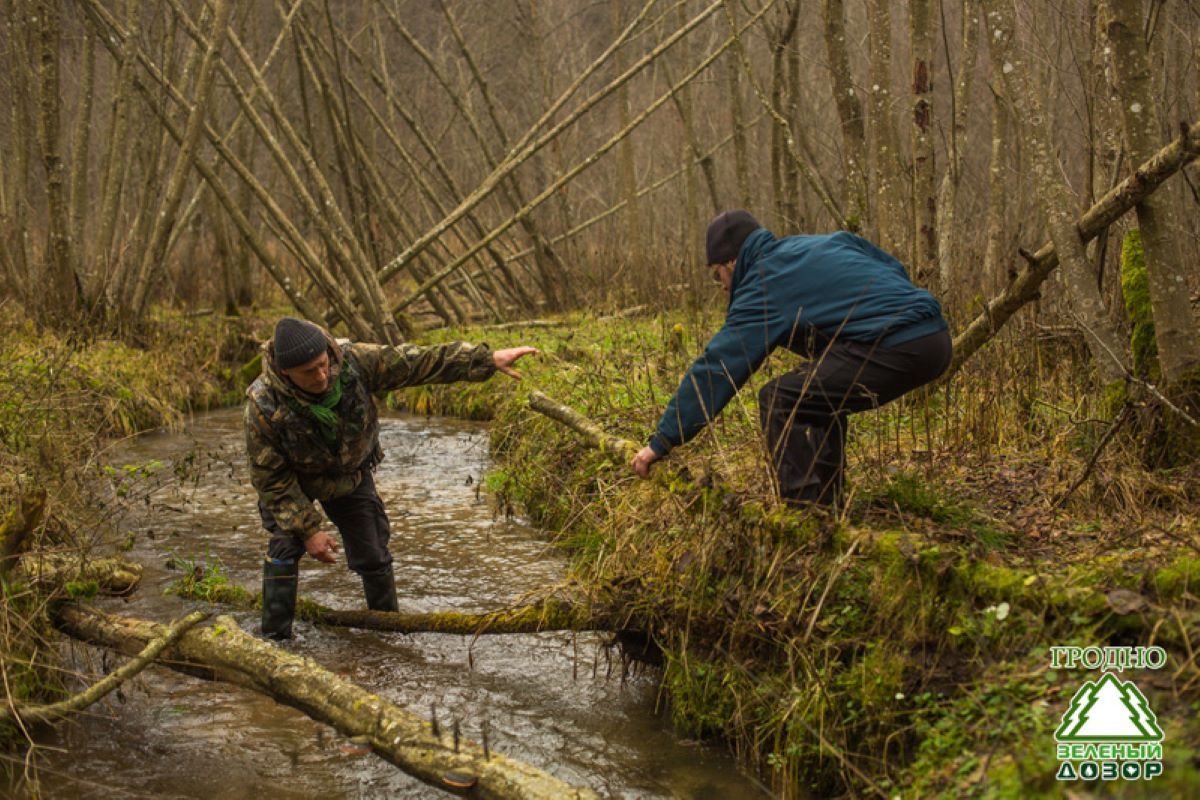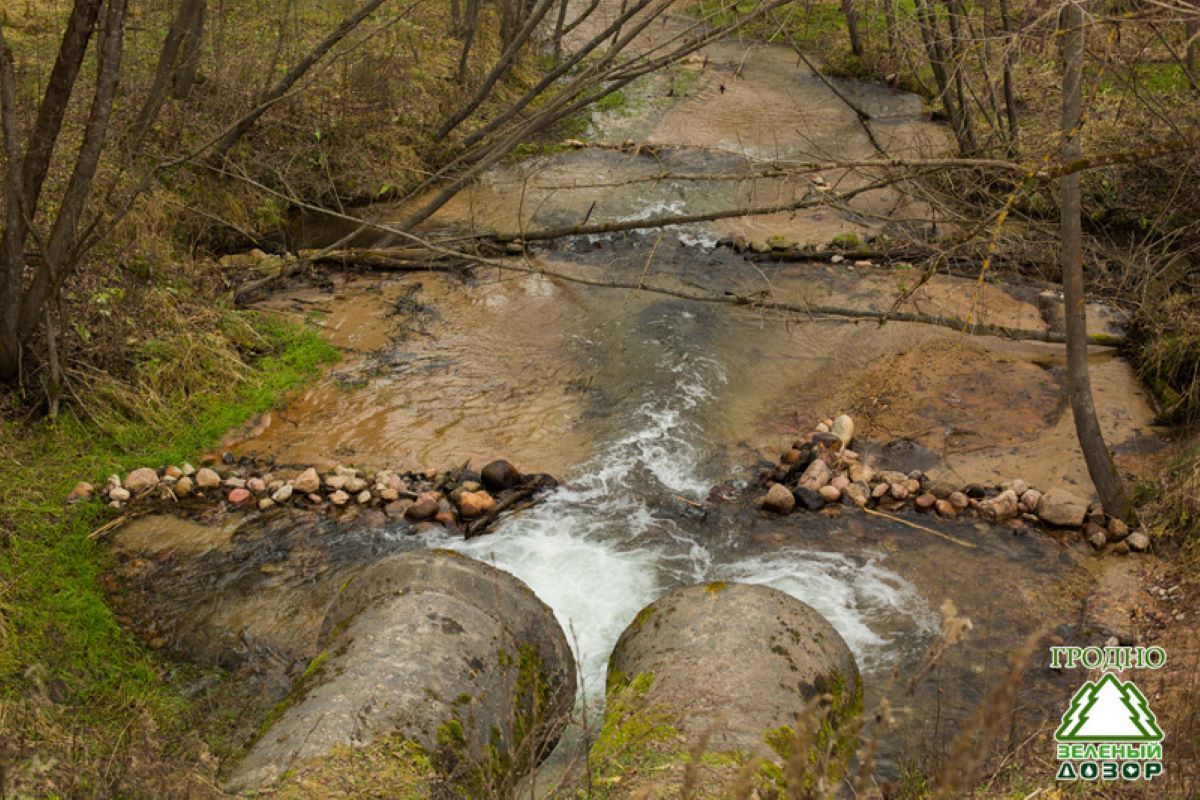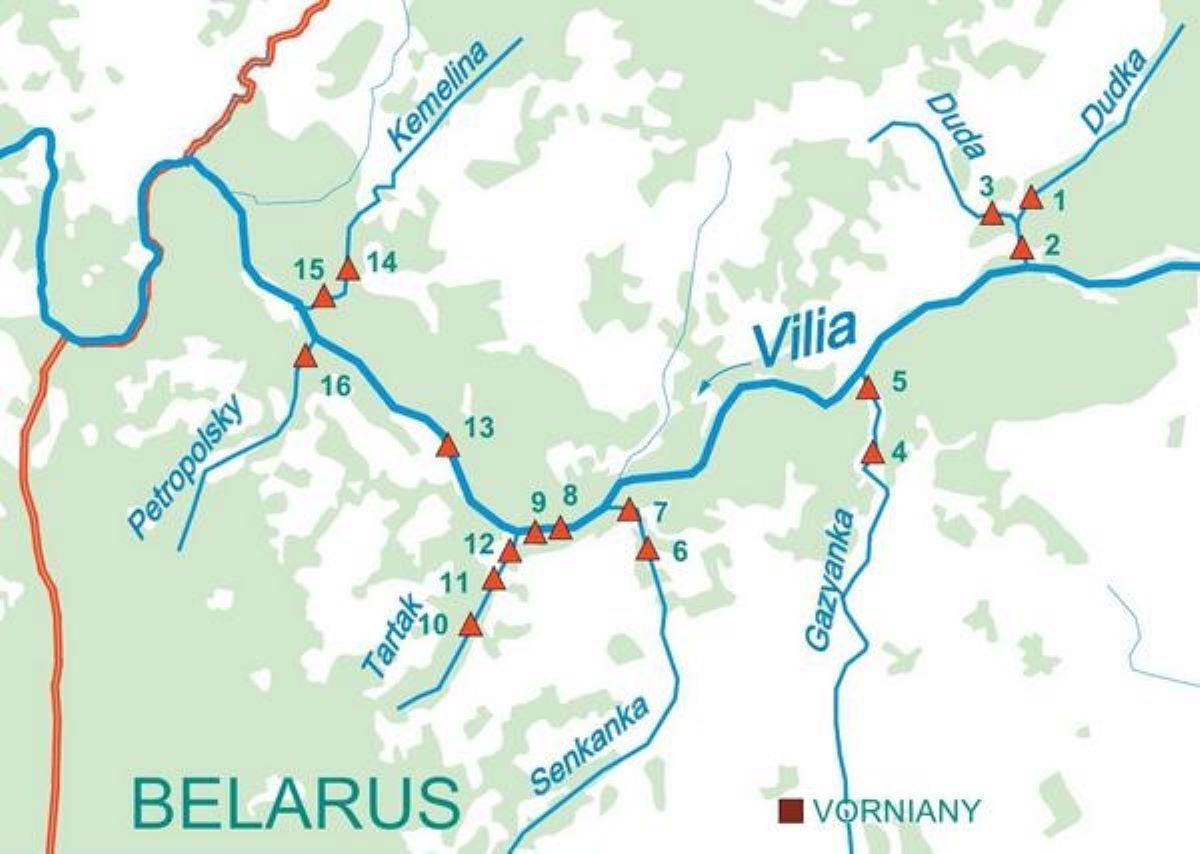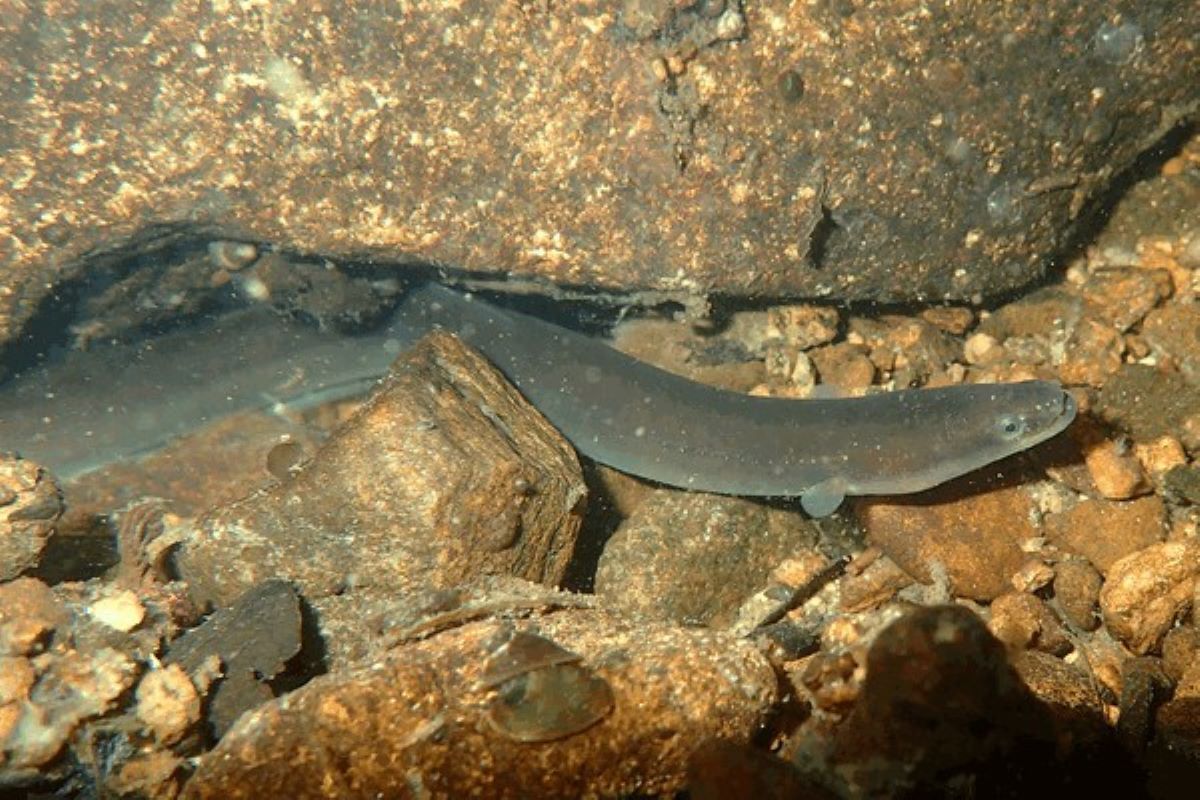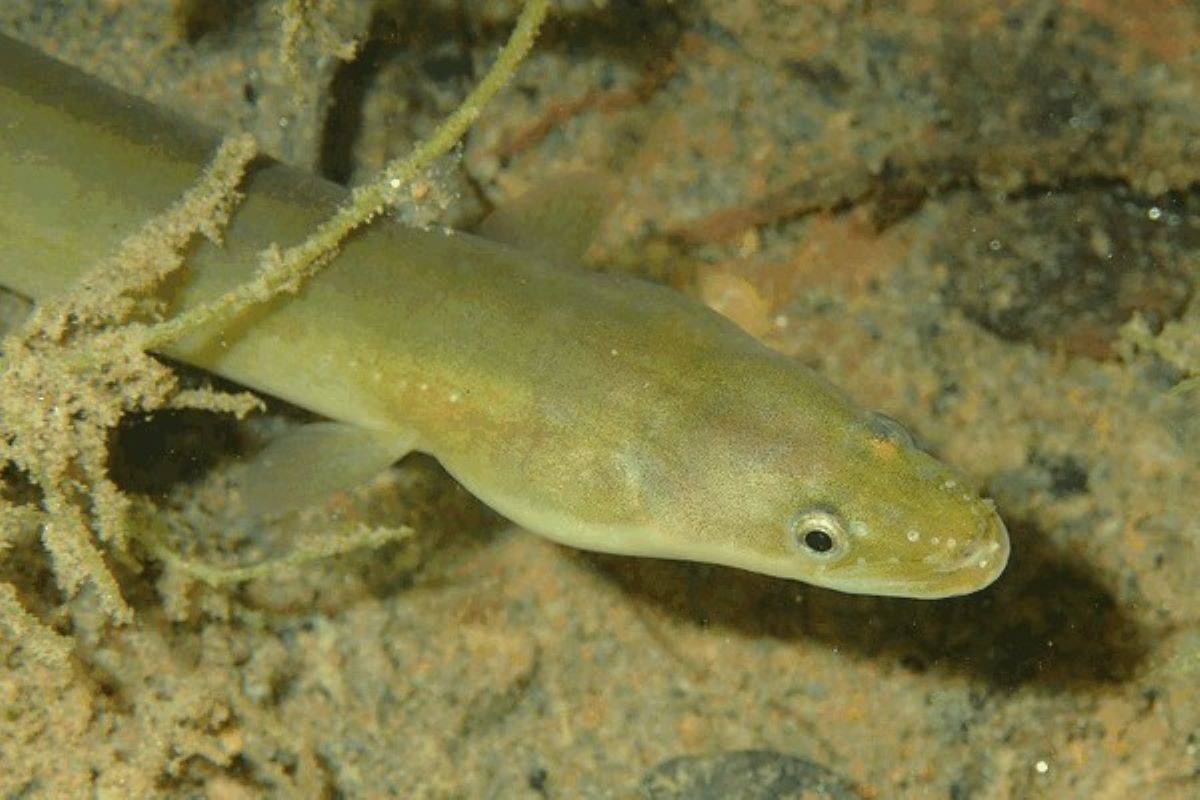Captive of hydropower plants: why can't salmon return to Belarus?
- Topic: Rivers and lakes
- Authors: Bahna
- Date: 18.01.2022, 05:39
Hydropower plants, which were promoted as the main source of clean electricity back in the middle of the last century, have now almost completely lost that status. Moreover, they are losing out considerably to other RES economically, too.
According to the International Renewable Energy Agency (IRENA), between 2010 and 2018, the cost per kilowatt of electricity generated from water power increased by 25% worldwide, while that generated from wind and solar power decreased by 25% and 76% respectively.
“Hydrokilowatt” looks even less green and profitable when you consider the negative impact that hydropower plants have on the fauna of the rivers on which they are built. Plain watercourses (such as those in Belarus) suffer the most damage because the water drop on them is achieved by the construction of dams and reservoirs.
We pay for light with fish
The World Commission on Dams reports on changes in ichthyofauna due to blocked migration routes and deterioration of fish spawning conditions.
Thus, Belarusian rivers were deprived of migratory fish species after the construction of Dneprodvinsk and Kaunas hydropower plants. In the last century, somewhat later than these, other major hydropower plants appeared, damming the Western Dvina (Ķegums HPP, 1935; Pļaviņas HPP, 1966; Riga HPP, 1972) and the Dnieper (Kakhovka HPP, 1956; Kremenchuk HPP, 1960; Dneprodzerzhinsk HPP, 1965; Kyiv Pumped-Storage Power Plant, 1970; and Kaniv HPP, 1975).
According to the ichthyologist, Professor Prokhor Zhukov, before 1965, five fish species disappeared from Belarus’ reservoirs due to the construction of hydropower dams.
Scientific works and literature prove they used to inhabit our waters.
The dates of their last catch in the Belarusian rivers are also recorded: the starred sturgeon — in the 16th century, beluga sturgeon — in 1907, Russian sturgeon and Black Sea roach — in 1927, Atlantic sturgeon — in 1955. The construction of the first dam on the Dnieper began in 1927 and on the Neman in 1955. It is not difficult to see the dependency.
These are all anadromous fish species. Their life cycle implies that they enter freshwater to lay eggs and the young fish roll back into the sea with the current. Hydropower dams are becoming a barrier in their way. The problem could be solved through fish-ways — but the hydropower plants concerned do not have one.
The Atlantic sturgeon is an exception. It could enter the Viliya, which flows into the Neman upstream of the hydroelectric dam. However, already in the early 20th century, the species became rare even in the seas. Active fishing is to blame. This led to the Atlantic sturgeon’s near extinction in Europe. In 1975, the fish was listed on Appendix 1 of the Convention on International Trade in Endangered Species of Wild Fauna and Flora (CITES), which lists species that may be traded only in exceptional situations.
The last of the Mohicans
In the 1960s (when the Pļaviņas and Riga Hydropower Plants were built) salmonids were not recorded in Belarus at all, however, almost 40 years later the salmon and brown trout began to spawn here in the River Viliya. This river’s tributaries are ideal for the fish: they are shallow, with cold water, fast current, the bottom is stony, and the water is enriched with oxygen. The salmon population in the Viliya River basin is growing, as evidenced by the results of ichthyologists’ monitoring.
The conditions in which salmonids come to spawn in Belarus is one of the factors affecting the Baltic population of Atlantic (Baltic) salmon and brown trout. As it was noticed by Mikhail Durkin, executive secretary of the Clean Baltic Coalition, both these species are included in the Red Book by the Marine Environmental Protection Commission of the Baltic Sea in the VU category (vulnerable). These are species that, if the conservation situation does not improve, could become endangered.In addition to blocking migration routes, the ecologist cites commercial and recreational fishing, genetic pollution through artificial reproduction, undesirable alien species, and diseases, including those transmitted by alien species, as the main threats to the population.
A prime example of such an alien species is the rainbow trout. It was brought from America for breeding in artificial conditions. Nowadays several farms in the country cultivate the species. However, the trout occasionally “escape” into natural watercourses.
“The situation with salmon fishing in the Baltic Sea is so dramatic that the International Council for the Exploration of the Sea (ICES) recommends to stop completely both commercial and amateur catch of Atlantic (Baltic) salmon, except for the Gulf of Finland, and to significantly limit brown trout fishing in 2022,” Mikhail Durkin says. “But it is impossible to correct the situation only by regulating fishing. Without good conditions of spawning grounds in rivers, it is impossible to restore the population.”
The ecologist points out that today at least 43 river systems remain in the Baltic basin where salmon spawn, 29 of them have natural, not artificially maintained, populations.
As mentioned above, the only natural migration route remains through the Viliya, which flows into the Neman downstream the hydropower dam, thus providing free passage for the fish up to the spawning grounds in Lithuania and Belarus.
“Despite artificial stocking on Lithuanian territory, there are reasons to believe that the salmon that come up to spawn in the tributaries of Viliya are of natural rather than artificial origin,” emphasises Mikhail Durkin. “Thus, this is a preserved herd of unique wild Baltic salmon and brown trout. In fact, now these species remain and reproduce naturally only in a few tributaries of the Viliya.”
Therefore, the possibility of preserving the natural population of wild salmon in Belarus is a great contribution to maintaining its population in the Baltic basin.
At the same time, any action aimed at preventing migration and spawning (construction of dams on spawning rivers of Belarus, pollution of these rivers, including thermal pollution from discharge of cooling water from the Belarusian NPP) significantly affects the state of the population of two Baltic salmon species, which are listed as vulnerable species in the International Red Book of the Baltic Sea.
Spawning under protection
As you can see, the possibility to enter the tributaries of the Viliya is not the most important condition for successful spawning. Volunteers ensure that locals do not catch vulnerable fish during this period of their life cycle. They organise voluntary patrols of streams, remove debris and dams, and make sure that stony areas are kept free of sand.
The population is monitored by ichthyologists of the Scientific and Practical Centre for Bioresources of the National Academy of Sciences. According to Vladimir Koltunov, a researcher at the institution, the brown trout enter small rivers and streams, while the salmon spawn mainly in the Viliya.
“We cannot estimate how many specimens come to spawn. Their number may differ from the number of nests; fish often spawn in the same places,” explains Aleksey Poletaev, a researcher at the research centre.
In 2021 the results were as follows: 58 nests of brown trout in the Tartak Stream, 35 nests in the Dudka River and its tributary, the Duda Stream, 23 nests in the Senkanka River, 6 nests in the Kimelina River.
The arrival of migratory fish is not always an indicator of population growth. It may vary from year to year and depends on how fish gains weight in the sea. Some fish come to spawn once every two years, others once every three years. But the general trend towards an increasing number of nests is clearly visible.
The count on the Tartak has been conducted since 1999, and at first, ichthyologists counted 7-10 nests of brown trout. The number of migratory fish was greatly affected by poaching.
“It was so widespread that the lower reaches of the Tartak were distributed between local people, who stood there with a fishing spear,” Aleksey Poletaev says. “At the end of the 2000s, volunteer programmes for patrolling spawning grounds began to function. Some local activists make sure that the vulnerable fish are not bothered at this time. I would not say that poaching has been eliminated, but it is now an exception rather than the rule.”
Volunteers help to improve the access of fish to the rivers. The main obstacle to this is beaver dams, of which there are many in the area of the Viliya tributaries.
“But now all of them are destroyed, this work is carried out regularly in many respects thanks to environmentalist Aleksandr Doroshevich,” Vladimir Koltunov notes. “Though, beaver traces — fresh “gnawings” on trees — are visible everywhere. On 17 December we finished our work; we will return in spring to see if the juveniles have hatched.”
It is more likely, the scientist notes, that the animals will rebuild their dams. During the monitoring no traces of beavers’ natural enemy, the wolf, were found, nor were there any mauled or eaten beavers. So, the beavers were not prevented from damming the rivers and streams.
This year, we did not notice any impact on water temperature in the rivers and streams. Ichthyologists do not undertake to predict whether it will. During the environmental impact assessment of the nuclear power plant, no information was provided as to whether the rivers of Ostrovets district are going to be used as cooling water reservoirs. So far it is premature to say that water temperature has risen and to predict whether it will rise shortly.
The problem of lack of spawning grounds has also been solved thanks to volunteers. When there were not enough grounds for nests, fish could destroy each other’s clutches.
“This problem did exist in the Tartak,” Aleksey Poletaev confirms. “Under the roadway, the Tartak flows through a pipe. Volunteers made artificial rapids downstream, erected a wall of stones, and thus raised the water level, so the fish began to freely pass under the pipe.”
Ichthyologists of the Academy of Sciences conducted a very interesting experiment. In 2017, for the first time, they caught a female brown trout, took her eggs (the fish remained alive after the operation), and decanted the male’s milt. The artificially fertilised eggs were placed in natural incubation sites.
“Speaking of the life cycle of the brown trout, the fry born in 2017 rolled into the sea in 2019-2020,” says the researcher. “It should take two to three years before they return for the first time. In other words, the artificially bred fish could return here in a couple of years.”
Atlantic salmon that spawn in Viliya are observed regularly in recent years: last year about ten specimens were observed in different parts of the river, this year — some eight fishes. Ichthyologists were now planning to repeat the experiment with artificial insemination, but they managed to catch only male salmon.
The way to the Sargasso Sea is closed
Another fish that vitally needs a passage through rivers blocked by dams is the European eel. It spawns in the algae of the Sargasso Sea, and the larvae travel with the Gulf Stream to the Baltic Sea. From there, along the rivers, it moves to freshwater reservoirs. Here, the fish only grow, do not reproduce. Fattened individuals then return to the Sargasso Sea, where they spawn and die.
During the lecture “Children of the Sargasso Sea,” the problem of the eel population in Belarusian water bodies was voiced by Viktor Rizevsky, a candidate of biological sciences, head of the ichthyology laboratory of the Scientific and Practical Centre for Bioresources of the National Academy of Sciences of Belarus. The scientist noted that today it is practically impossible for the fish to get into freshwater reservoirs due to the dams without fish-ways. The country’s reservoirs were stocked with young eels, which were purchased from other countries. However, the last time this was done was in 2008: the problem is related to the ban on selling eels outside the EU.
The fish start to roll into the Baltic Sea along the Viliya River after 7-9 years and do not migrate the entire population at once, but gradually over 20 years.
In other words, if the situation with stocking does not change, there may be no eels left in Belarus after 2028.
According to Mikhail Durkin, the situation of the European eel is even more disastrous than that of salmon. It is in a critical condition both in the Baltic basin and Europe in general.
“To return eels to the Belarusian water bodies it is necessary to forbid their fishing, both industrial (at fish farms) and poaching. Measures should be taken to prohibit such fishing in other European countries as well,” the ecologist is convinced. “This is possible if we harmonise actions on the level of the Convention on Conservation of Migratory Species of Wild Animals. If fishery of eels returning to spawn in the Sargasso Sea or, vice versa, from the Sargasso Sea to feed in the Baltic Sea and Baltic rivers continues, any actions, including stocking and prohibition of fishing, in upstream rivers (in Belarus or elsewhere) will not make sense. I don’t think that stocking can in any way save the situation, especially since today Belarus cannot officially import eel larvae for stocking due to a ban under the CITES Convention.”
Turbines are the enemy of plankton
The World Commission on Dams report identifies changes in the primary biological productivity of ecosystems, including impacts on the river and riparian flora as the second item affecting ichthyofauna. Here we are talking about the reduction of available plankton volume.
This problem is also mentioned in various environmental impact assessment reports on the construction of hydropower plants. For example, the EIA of the Vitebsk HPP on the Western Dvina contains information about the changes that will occur as early as the construction phase: in conditions of increased turbidity filter-feeding organisms may disappear from the zooplankton composition. During the active construction, true plankton daphnids will disappear from the fauna, and lamellibranch mollusc will be missing in the benthos.
The rapid flow of the Western Dvina River will spread this impact several tens of kilometres downriver. This will cause fish populations that consume plankton and various invertebrates to change. In the reservoir the rheophilic fauna (fauna of flowing water) will be replaced by limnophilic fauna (fauna of stagnant water), a lake-type biocoenosis will start to form upstream of the dam and a river-type one downstream. It will take about 10 years to restore the balance.
The document also focuses on changes in the plankton community as a result of transit through a regulated stream. Passage through the culvert contributes to the impoverishment of animal and plant plankton. This occurs for two reasons: the entering of lake organisms (from upstream) into river conditions (downstream) where the current is destructive to them, and the destruction of plankton during the passage through the waterworks.
An in-depth analytical review on this topic was made by scientists from Nizhny Novgorod — Vladimir Loginov, Candidate of Biological Sciences, and David Gelashvili, Doctor of Biological Sciences.
Using the example of the Volga-Kama cascade, they concluded that there is almost no sufficiently strong evidence of plankton mortality in hydroelectric turbines.
But assessing the negative impact of hydropower plant operation, scientists believe that a significant number of young fish are injured in hydro turbines and spillways and die because of this. The number of dead fish depends on the conditions of the water body and the volume of water that passes through the hydropower turbines.
If we go back to the EIA of the Vitebsk hydropower plant, another negative impact that such installations have on ichthyofauna is obvious. It concerns fish that spawn on rocky or sandy-gravel substratum — Alburnoides bipunctatus, asp, chub, zanthe. Flow velocity and dissolved oxygen levels are important for these species. Therefore, they will move to the upper reaches of the reservoir.
Fish productivity will decrease without compensatory measures. Part of the ichthyofauna will die as a result of construction works.
The habitat of local fish species in the downstream area may also be affected. This will result from the loss of shoals and backwaters, as also stated in the report of the World Commission on Dams. Changes in channel and floodplain morphology often result in the transformation of riparian vegetation, which affects biodiversity.
The control of floodwaters by large dams, which freshwater species use for spawning and feeding, also harms fish productivity. Typically, dams reduce runoff during seasonal floods and increase it during the dry season.
Poaching liberty
It is not just migratory species that are hindered by the lack of fish-ways. A significant number of native species congregate in front of the dams and are actively fished. If such catches are not restricted, the population may be severely diminished.
They are trying to solve the problem with regulations. For example, recreational fishing in the Neman section (from the dam of the Grodno hydropower plant 1000 m downstream to the place where an unnamed stream flows into the river) is prohibited from December 1 to July 1 each year. The prohibition on recreational fishing in the section of the Western Dvina near the Polotsk HPP has been extended until 8 June 2025.
However, no law rules out poachers there. And the trap at the hydropower plant makes the fish easy prey for them.
Featured photo — © Unsplash
Bahna materials may only be reprinted with the written permission of the editorial board.
